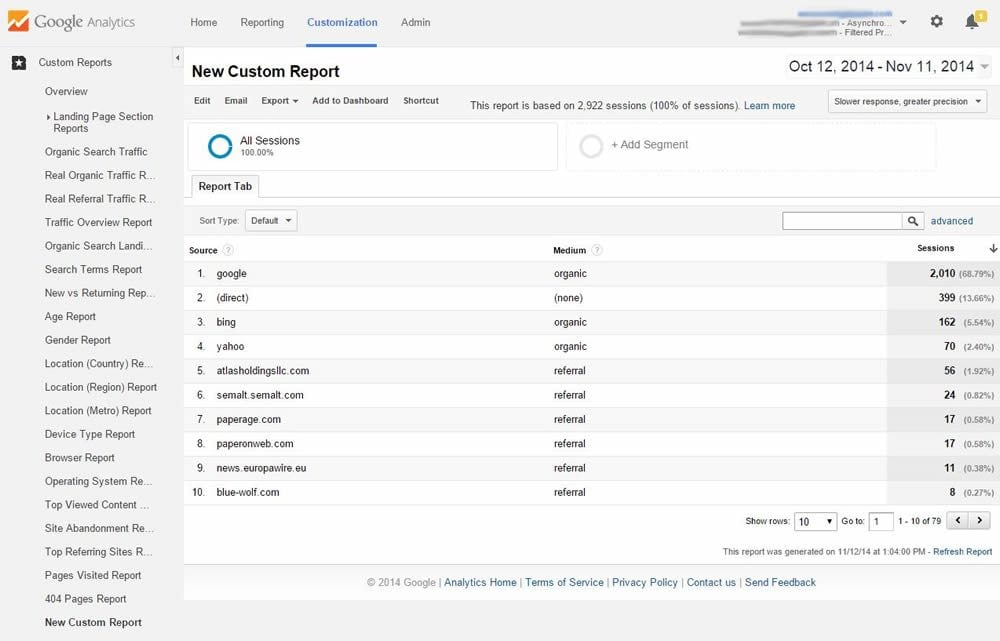Mastering Secondary Dimension in Google Analytics: A Total Guide
Mastering Secondary Dimension in Google Analytics: A Total Guide
Blog Article
Enhance Your Data Evaluation Using Additional Dimension in Google Analytics
Discovering the abilities of second dimensions in Google Analytics opens up a realm of possibilities for refining information analysis. The capability to study details further beyond the surface area level presents a nuanced view that can form strategic decisions. By layering extra dimensions onto main information sets, a more complex narrative emerges, clarifying individual communications and performance indications. This dynamic approach to information assessment holds the key to opening concealed patterns and patterns that could change exactly how businesses interpret their digital impact.
Understanding Second Dimensions
Second dimensions in Google Analytics refer to additional parameters that can be included to the main measurement, permitting for a more thorough analysis of information (Secondary Dimension in Google Analytics). By including additional measurements, experts can segment and filter information to discover patterns, trends, and correlations that may not be apparent when looking at the information as a whole.

Advantages of Making Use Of Additional Dimensions
When examining information in Google Analytics, the use of secondary measurements supplies important understandings right into customer habits and performance metrics. By including a second dimension to your primary data, you can dig much deeper into the qualities of your website site visitors and their interactions.
Moreover, second measurements help in determining patterns and connections that might not be right away noticeable when checking out the information in seclusion. This much deeper degree of evaluation can reveal valuable info that can direct marketing methods, website optimization, and general business choices. Additionally, second dimensions boost the context of your main data, providing an extra comprehensive sight of customer interaction and performance metrics. Overall, making use of secondary measurements in Google Analytics can dramatically boost the depth and high quality of your data analysis, causing more educated decision-making and boosted results.
How to Include Additional Dimensions
By including secondary measurements in Google Analytics, customers can gain much deeper understandings into their information analysis process, enabling for even more thorough assessment of individual actions and performance metrics. Adding secondary measurements is an uncomplicated process that can significantly enhance the deepness of evaluation. As soon as in the dig this record, situate the "Secondary dimension" tab above the data table.
Analyzing Data With Additional Measurements
Utilizing second dimensions in data analysis gives an extra thorough understanding of customer actions and efficiency metrics. By adding an additional dimension to your primary data embeded in Google Analytics, you can dig deeper into the characteristics of your web site site visitors and their interactions. Combining the key dimension of 'source/medium' with the second measurement of 'landing page' can reveal which particular pages are bring in web traffic from various sources, aiding you optimize these pages for far better involvement.

Basically, examining data with secondary measurements equips you to gain beneficial insights right into individual actions, determine trends, and make educated decisions to boost the efficiency of your digital residential or commercial properties.
Best Practices for Secondary Measurements
In information analysis, including second measurements successfully can significantly enhance the depth of understandings originated from metrics and individual behavior patterns. When making use of secondary dimensions in Google Analytics or any other logical tool, it is crucial to stick to finest techniques to guarantee the precision and relevance of the data evaluation.
One key finest technique is to thoroughly choose additional measurements that complement the site link main dimension being assessed. Choosing secondary dimensions that give additional context or further segmentation can use an extra comprehensive understanding of the data. It is additionally necessary to avoid overcomplicating the evaluation by including a lot of second dimensions, which may lead to confusion or dilution of understandings.
Moreover, it is suggested to trying out various combinations of secondary and key measurements to uncover new relationships and trends. Frequently reviewing and fine-tuning the option of additional dimensions based on the certain objectives of the evaluation can bring about even more workable understandings. By complying with these finest techniques, information analysts can take advantage of secondary measurements successfully to improve the general data evaluation procedure and decision-making abilities.

Verdict
To conclude, incorporating additional dimensions in Google Analytics is vital for a detailed information analysis technique. By leveraging additional measurements together with main ones, analysts and marketing professionals can reveal useful insights and connections that can notify decision-making and enhance digital marketing techniques. Understanding how to effectively utilize additional measurements and following best practices will certainly allow experts to remove meaningful information and boost their total performance metrics.
Secondary dimensions in Google Analytics refer to additional criteria that their website can be added to the main dimension, enabling for a much more comprehensive evaluation of information. By including additional measurements, experts can section and filter information to reveal patterns, fads, and relationships that could not be noticeable when looking at the information as a whole. Incorporating the primary measurement of 'source/medium' with the secondary measurement of 'landing page' can reveal which certain pages are bring in web traffic from various sources, aiding you optimize these web pages for better involvement.
One secret ideal practice is to meticulously choose secondary dimensions that enhance the primary measurement being analyzed. By complying with these finest techniques, information experts can utilize second dimensions properly to boost the total information analysis process and decision-making capacities.
Report this page